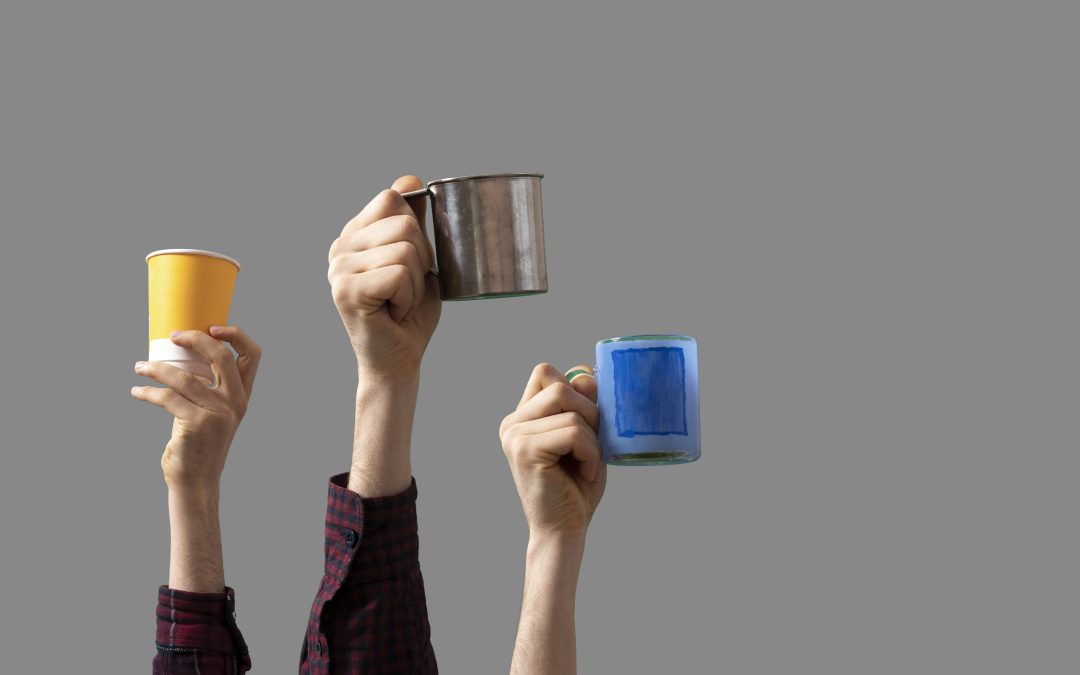
Embrace longer-term thinking
Next made industry headlines recently when they announced that despite a potential loss of £1bn, they would use the coronavirus pandemic as a window in which to revitalise their marketing systems.
Chief Executive Simon Wolfson told Marketing Week:
“Our sector continues to experience profound and lasting structural changes and these changes are not on hold. Indeed, it is possible that the pandemic may accelerate the transition to online shopping. So, we cannot afford to neglect our continuing efforts to transform every part of our business. This process of learning new ways to serve our customers, collaborate with partners and create value for our shareholders is a task that involves every function in our business. Our buying, sourcing, systems, marketing, warehouse, distribution and store teams are all having to re- invent what we do to adapt to a rapidly changing world.”
Others have pointed out that now is a vital time to invest in the health of your brand.As Mark Ritson said on the topic: ‘If there is one major marketing challenging now facing most big brands it is what to do with their newly slashed marketing budget. If you’ve just lost half of it, the temptation is to dump it all into shorter-term performance marketing and sales promotions.
That would be an error. No amount of hot deals and clever sales activation can stimulate a market that is currently terrified, locked inside their homes and unsure of their future. The smarter play is to focus more of it on the longer-term brand-building mission… this virus, too, shall pass. At some point consumers will return to the streets, the cafes and the various other activities that they have been denied during the dark days ahead. Keep the brand light burning, because the cost of snuffing it out for the rest of 2020 and then trying to reignite it next year is gigantic.’
16
Neill Horie – Associate Director of Digtial Strategy
Ensure you have future-fit consumer tech
It’s crucial right now that your customers can acquire and engage with your product from home. On top of that, as this will be the main means of engaging for some time, you need to have stand-out or a means of linking together with other brands, so you don’t get lost. This means looking at innovation of your technology and platforms. If people are stuck at home for three months, they might want something more exciting to engage with and buy VR products, better home-cinema infrastructure, wider screens on their monitors, 8K-capable televisions, tablets and even more smart home equipment.
Make sure that your equipment works to the fullest capability on devices and specifications that have been up-and-coming or niche for a while, as they may suddenly be mainstream. Along similar lines, your support teams may take heavy volume over the coming months, so anything you can to do to automate that in terms of chatbots – even basic on-site ones – will reap significant cost savings.
Map the new consumer landscape
So much is changing so quickly, we don’t know what the effects will be – but we do know how consumers consume will be affected for some time. How do businesses think ahead to try and understand the changing consumer landscape?
A new customer analysis will be vital for many.
Joe Osborne – Data Scientist
With rapidly changing environments and a new normal about to emerge, grounding your strategy in reality is more important than ever. Here’s how:
1. Identify the way which customers interact with your business, and try to identify that on a discrete level, (a company for B2B, an individual for B2C). Sounds simple but this is the most critical step.
2. Once you have that information, there is an initial level of insight available, which gives you a high-level view on how your customers interact with you. And maybe more critically, how those interactions are changing over time.
3. If you have that interaction on an individual or company level, you can begin to augment that with other data sources (internal or 3rd party).
For example:
Marketing tracking i.e. keeping record of
the marketing interactions you have with an individual/company, allowing you to make smarter choices around your marketing spend.
• Unlocks: PCAs and targeting models
Profiling data, i.e. appending data from a supplier to get a more detailed picture of the elements that interact with you, such as demographic information for individuals, and structural information around businesses. This allows you to make smarter choices around your customer base as a whole and verify or reveal more sophisticated groups in your base.
• Unlocks: Profiling, segmentation and improved targeting models.
Ben Briggs – Media Director
With more people of all ages being at home for a much greater proportion of the day, there is huge scope to use media which can be delivered directly into the home or digitally. This includes:
- Inserts in subscriber magazines
- Press ads
- Door drop
- Partially addressed mail
- Direct mail
- TV
- Radio
- Podcasts
- Lead generation
Printed media couldn’t be more relevant (in the form of door drop, partially addressed mail or direct mail), especially in light of the Government’s announcement that postal workers are considered ‘key workers’ meaning the delivery of post will continue, which can only be good news for all.
Traditional media can be precisely targeted at an audience or geographic level, which means they can be run in tandem with other tightly targeted channels such as addressable TV. By creating a multi-layered campaign with sequential messaging, brands will see higher levels of response and ultimately a higher ROI.
As this situation evolves, people may become blind to ‘always on content’.
Cleverly targeted media that catches you in the moment of freedom from our increasingly digital lives may come to the fore, such as contextual podcast advertising and press adverts which can be consumed in consumers ‘breathe in’ moments.
Will we see another surge in adblocking to match the heightened digital noise?
New frugal spending habits to the fore?
This will undoubtedly be a huge reset button for everyone.
A return to appreciating a simpler life, embracing stillness, making the most of what you have, spending quality time with family and friends, picking up the phone rather than texting – we may be on the cusp of a resurgence of gratitude for
simple pleasures.
Brands that serve consumers with the ability to share these experiences (National Trust/ Merlin/ English Heritage) are likely to see spikes in uptake when we are once again allowed to roam free. In the meantime, the home improvement market is likely to see a boom.
Kantar has released media consumption data too. 25,000 consumers across 30 markets between 14-23 March had their say on how habits are changing. This was before the lockdown in the UK and India took hold.
It will be interesting to see how social media performs in the next few months as we transition into a deeper period of isolation. On the one hand, it’s a great connection platform. On the other; fake news, endless TikTok and fitness adverts.
The survey gauged social media and app use. WhatsApp has made the biggest gains as families turn to the app to stay in touch. In counties under strict lockdown, such as Spain, usage was up 76% in a few short weeks.
Will we see people turn away from Facebook to protect their mental health favouring more direct connectors such as WhatsApp and will consumers want a digital detox when the smoke has cleared?
Neill Horie – Associate Director of Digital Strategy
There may be new motivational triggers for these consumers. A sense of social belonging – particularly virtual social belonging (e.g. social media) may be more important than ever after a few weeks of isolation, as people will lack any physical or day-to-day ways of judging how they fit in.
To read the rest of What Matters Now? please download the full report here









